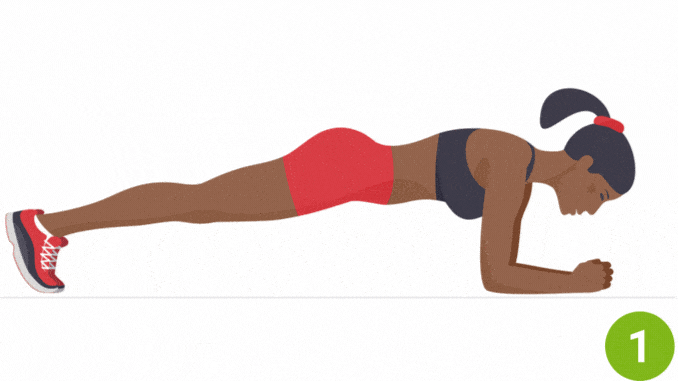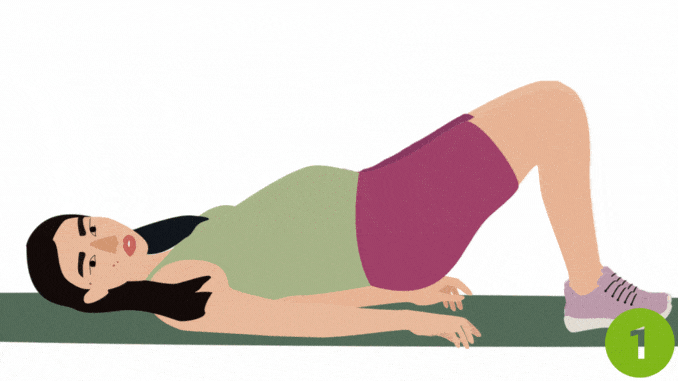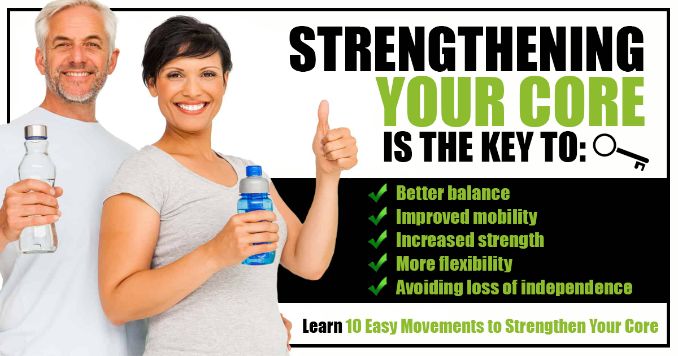When it comes to sculpting a six pack, many people fall into the trap of doing endless ab exercises—day after day, week after week—without ever seeing real results. Sound familiar? You’re not alone. Even with all the hard work and dedication, effort alone isn’t always enough if your approach is wrong.
Overtraining abs is a common mistake [1] that can lead to pain, poor posture, muscle fatigue and strain, and even a weaker core in the long run. There’s a lot of controversy about whether you should train abs everyday—some believe abs everyday is necessary for results, but this can actually be counterproductive and increase the risk of overtraining and injury.
If you’re training your abdominal muscles nonstop in hopes of a flatter stomach or better athletic performance, it might be time to rethink your strategy. Let’s break it down—and show you the right way to train your core [2] for lasting, body-transforming results.
The Right Way to Train Abs
Instead of overloading your abs with hundreds of crunches, try this smarter, more effective routine. These moves target your entire core, not just the visible abs.
To maximize effectiveness and prevent injury, it is important to perform each exercise with proper technique. Make sure your abdominals are properly trained and conditioned for best results, and focus on engaging the abdominals during every movement.
1. Dead Bug

- Lie on your back on a yoga mat, holding a light dumbbell in each hand.
- Bend your knees to a 90-degree angle, lifting your legs so your shins are parallel to the floor.
- Extend your arms straight up toward the ceiling, keeping the dumbbells aligned with your shoulders and your core engaged.
- The Dead Bug exercise helps stabilize the torso and improve core control by engaging the muscles surrounding your abdominal area and spine.
- Slowly lower your right arm and left leg toward the floor in a controlled motion, keeping your lower back pressed into the mat.
- Keep your neck in a relaxed and aligned position with your spine to avoid strain and ensure proper alignment throughout the movement.
- Stop just before your limbs touch the ground.
- Pause briefly, then return to the starting position.
- Repeat the movement on the opposite side, lowering your left arm and right leg in unison.
- Continue alternating sides for 10–12 repetitions per side.
- Maintain steady breathing, inhale as you extend, and exhale as you return to center.
- Focus on controlled movement and deep core activation throughout the exercise
2. Forearm Plank with Reach

- Begin in a forearm plank position on a yoga mat, keeping your elbows directly beneath your shoulders and your forearms parallel.
- Your legs should be extended straight behind you with your feet hip-width apart.
- Engage your core, glutes, and thighs to maintain a straight, rigid line from your head to your heels.
- The plank also engages your chest muscles, providing upper body stability along with shoulder strength.
- Without rotating your hips or shifting your weight, slowly extend your right arm straight out in front of you, keeping it in line with your shoulder.
- Hold briefly, then return your arm to the mat. Repeat the movement on the opposite side, reaching forward with your left arm.
- Continue alternating sides for 8–12 repetitions per arm.
- Breathe steadily—inhale as you reach, exhale as you return.
- Focus on slow, controlled movement to challenge your core stability, shoulder strength, and postural control, and ensure you are performing each repetition with proper form and control.
3. Glute Bridge March

- Lie on your back on a yoga mat with your knees bent and feet flat on the floor, hip-width apart.
- Place your arms at your sides with palms facing down.
- Engage your core and lift your right leg off the floor, extending it straight or keeping it bent at a 90-degree angle—whichever feels more stable.
- Press through your left heel and lift your hips toward the ceiling, creating a straight line from your shoulders to your left knee.
- Squeeze your glutes at the top and hold for a brief pause.
- Slowly lower your hips back down with control, keeping your right leg lifted throughout the movement.
- Complete 8–12 repetitions on one side, then switch legs and repeat. Inhale as you lower down, exhale as you lift.
- Focus on driving through the heel, maintaining hip alignment, and avoiding lower back arching.
This exercise targets the glutes, hamstrings, and core while improving unilateral strength and stability.
4. Hollow Body Hold

- Lie flat on your back on a yoga mat with your arms extended overhead and legs fully extended.
- Keep your feet together and squeeze your thighs, glutes, and core.
- Your lower back should be gently pressed into the mat, not arched.
- Simultaneously lift your arms, shoulders, and legs a few inches off the floor, forming a shallow “banana” shape with your body.
- Keep your head in line with your arms and avoid tucking your chin.
- Your arms should remain straight by your ears, and your toes should point forward.
- Hold this position for 20–45 seconds, breathing steadily in through your nose and out through your mouth.
The Hollow Body Hold is a highly effective core exercise that challenges your endurance and strength. Focus on keeping your core fully engaged and your body tight throughout the hold. To scale down, bend your knees slightly or bring your arms down by your sides.
The Dangers of Overtraining Abs

Overtraining abs might seem like dedication—but it can backfire. When you hammer your core with crunches or planks every day, your muscles don’t get enough time to recover, which is essential for growth and strength. Repeating the same ab workouts without adequate rest can cause excessive muscle stress and increase your risk of injury.
Here’s what happens when you don’t give your abs a break:
- Muscle damage increases, slowing down recovery.
- Your hip flexors often overcompensate, causing tightness and back pain.
- The other muscle groups in your body (like the glutes and back) weaken due to imbalance.
- Posture suffers, and you could even develop chronic pain in your shoulders or spine.
Even worse? You might never see those abs, no matter how hard you work—especially if you’re still eating too many calories or not engaging in full-body strength training to lose fat.
Smart Core Training = Better Results
Here’s what you should do instead of training abs every day: These strategies can be applied both at home and in the gym as part of a comprehensive fitness routine. Seeing progress from a smarter approach can also boost your confidence and motivation.
1. Focus on Full-Body, Functional Movements

Workouts that involve the whole body—like squats, deadlifts, and overhead presses—engage your core without isolating it. These strength exercises improve your core stability while boosting metabolism.
2. Prioritize Recovery
Rest is not lazy—it’s the most important part of any training routine. Your core muscles need time to recover and rebuild, just like any other muscle group. Allowing for muscle recovery is essential to prevent overtraining and promote optimal results.
Plan your week with 2–3 core-focused workouts, leaving at least a day in between.
3. Improve Nutrition to Reveal Your Abs
No amount of crunches can offset a poor diet. To uncover the muscle you’ve worked so hard for, you must lose fat through a combination of strength training, smart eating, and consistent movement.
Final Thoughts: How to Actually Achieve a Stronger Core
Abs are just one part of your entire core, which includes deep muscles around your spine, obliques, and lower back. Targeting just the surface-level abs won’t do much for your athletic performance, injury prevention, or daily movement.
Instead of obsessing over crunches and high repetitions, train smarter:
- Incorporate a variety of your core exercises
- Focus on controlled movements
- Give yourself time to rest and recover
- Engage in whole-body strength training
- Pay attention to your nutrition and posture
According to Dr. Stuart McGill, Professor Emeritus at the University of Waterloo, author of Back Mechanic,
“The key to building a resilient core isn’t doing hundreds of sit-ups—it’s training for endurance and stability, not just strength or aesthetics.”
Dr. McGill emphasizes that overtraining abs with repetitive flexion-based movements like crunches can actually stress spinal discs and potentially lead to injury and lead to long-term back issues. Instead, he recommends exercises that build core stability and endurance, such as planks, bird dogs, and dead bugs—movements that protect the spine while strengthening the entire core [3] system.
Train with purpose. Rest with intention. And your core will thank you—with real results.
Strengthening your core is the key to better balance, improved mobility, increased strength, more flexibility… and avoiding loss of independence. Check out this 10 Easy Movements for a Stronger Core now!
Frequently Asked Questions
Is it bad to train abs every day?
Yes—training abs every day can backfire. Like any muscle group, your abs need rest to recover and grow. Overtraining abs can lead to muscle fatigue, imbalances, and even pain, especially in the lower back or hip flexors. Aim for 2–3 focused core sessions per week, paired with full-body strength training.
Why am I doing ab exercises but not seeing results?
Doing ab exercises alone isn’t enough to reveal a six-pack. The key to fat loss lies in your overall workout routine, calorie intake, and recovery. If you’re still eating too many calories or neglecting full-body training and recovery, the abdominal muscles you’re working so hard for will stay hidden.
Can overtraining abs cause posture problems or pain?
Absolutely. When you overwork your abs, especially with poor form or high repetition crunches, you can cause muscle imbalances, tight hip flexors, and stress on the spine. This can lead to shoulder rounding, lower back pain, and compromised posture.
What’s better for core strength: crunches or full-body movements?
While crunches target the surface abdominals, compound strength exercises (like squats, deadlifts, and overhead presses) activate the entire core and improve real-world strength, stability, and athletic performance. These moves should be the foundation of your core training.


